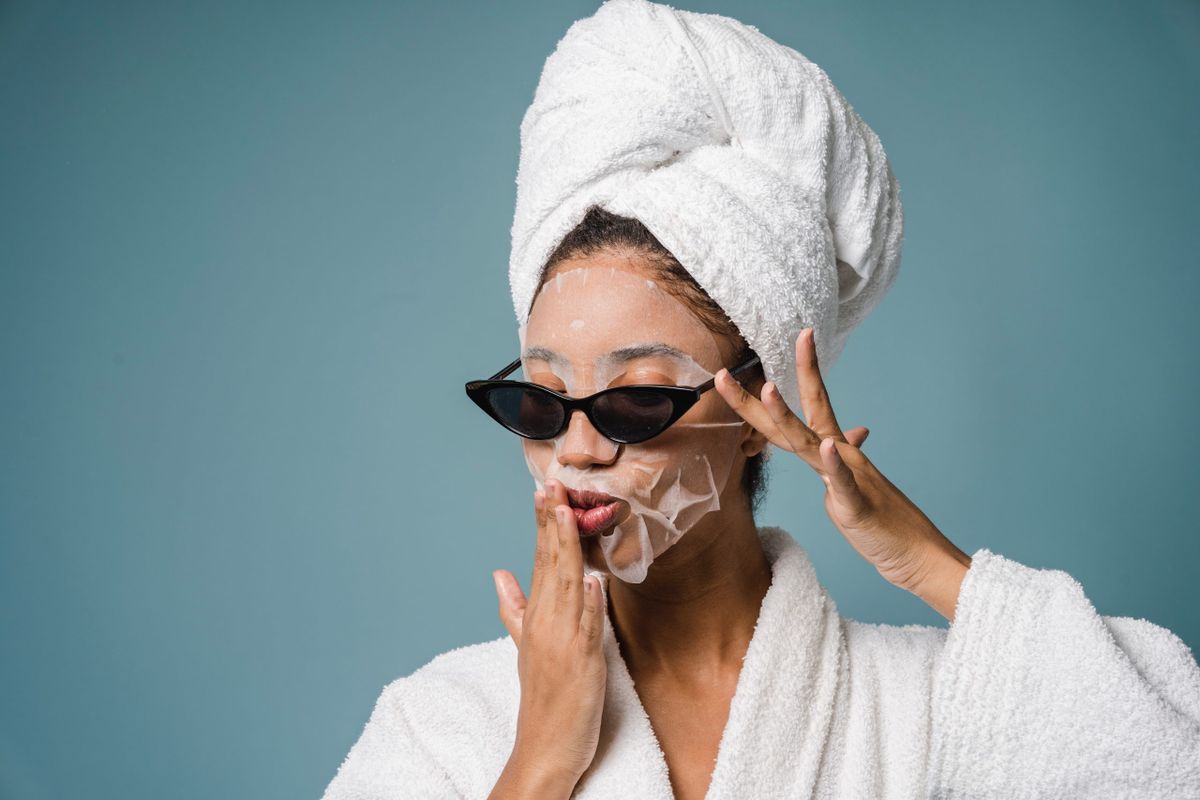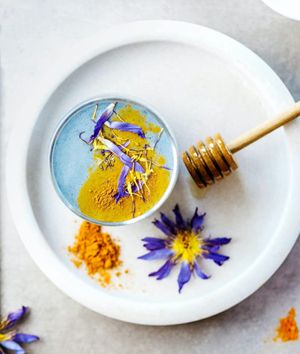Sheet masks are nothing new but over the last few years you have seen them everywhere. Whether it’s the rising popularity of Asian skincare, the influence of #SelfCare, the fact that they’re oh-so-Instagrammable, or just that we’re all looking for a quick fix, you’d be hard-pressed to have not jumped on the sheet mask bandwagon.
What is a sheet mask and how do I use one?
A sheet mask is pretty much a sheet of paper or lightweight fabric, cut to a face shape (usually with holes for your eyes, nostrils, and mouth to make sure that you can breathe). It’s soaked in skincare products to add a dose of moisture along with different product benefits – like brightening, hydrating, skin-clearing, or specifically for nourishing the eye area. You leave them on for a set amount of time, go about your business, and when it’s time to remove you should have glowing, hydrated skin for a short period of time.
There’s some conflicting information about whether sheet masks are good or bad for your skin – we’re clearing up some of the details for you so that you can work out if they’re a fab treat for your skin or a fad worth avoiding:
They’re the best for hydration
Putting on a sheet mask predominantly adds moisture to your skin by increasing the surface water content. The mask “seals” the ingredients in rather than them evaporating from your skin. This can mean that they penetrate the layers of the skin more thoroughly than other types of products.
Sheet Masks aren’t the same as traditional masks
A sheetmask does a different job to traditional type of wash-off mask that you add directly to your skin. Not to say that either is better or worse than the other, but a sheetmask won’t work as well for exfoliating, clarifying or deep cleansing – it’s best to stick to a traditional mask or a skincare routine for this type of benefit.
Is it safe for your skin on flights
We’ve all seen a #SelfCare post from a celebrity popping a sheetmask on on their private jet or first class flight – but have you seen the info that a sheetmask might not be the best thing for your skin while airborne? Given that the air on a flight is usually dry and you’ve got time to kill – surely a sheetmask is a good idea?
Just play it safe. Some derms suggest avoiding as the skin might not be at it’s cleanest and the cabin air probably draws most of the moisture out of the mask (as they use humectants which usually pull moisture from the air – not possible on a flight). As long as you have no open wounds on your face, keep it hygienic and don’t wear your mask too long you should be fine health-wise.
Drinking plenty of water, using a nourishing (traditional) face mask the night before, avoiding salty foods and keeping active on your flight are some great ways to avoid puffiness and dryness. Overnight creams and rich eye creams can be used during a flight too as these are designed to maximise hydration. If you’re set on a sheetmask, put it on towards the end of your flight to get the benefits when you hit the runway, and add a moisturiser afterwards.
Also, think of your other passengers. They probably won’t bat an eyelid at your be-masked face, but they may be sensitive to scents so avoid anything too perfume-y in a confined space.
Sheet masks are not great for acne-prone skin
Sheetmasks can increase the temperature of your skin, which isn’t great if you’re prone to breakouts as it can increase the bacteria count on the skin. Some ingredients (like certain oils and even eggs) may clog your skin up too – it’s best to test a mask on a small section of your face before you use it fully. Check for ingredients that are suitable for the needs of your skin – such as aloe vera or charcoal.
Sheet masks are safe and sanitary
Sheetmasks are usually vacuum-packed and hygienic. The fact that they’re single use means that they’re convenient and easier to avoid contamination with. They’re more wasteful as they’re packaged individually and you throw them away after use but you can balance that out against your own consumption – we’re not here to judge.
DIY sheetmasks look cute on Pinterest but they won’t be as safe or hygienic as one that you’ve bought from a reputable manufacturer. Plus, you never know when a combo of ingredients or a type of ingredient you add is going to react negatively to your skin (and really, what quantity to use).
Sheet mask effects aren’t long-term
You’ll usually see the benefits of a sheetmask on the skin for around 24 hours – this makes them great for events or occasions as you can reap the rewards of glowing skin at a specific time. If you’re looking for longer term skin solutions, then you’d probably be better investing in a skincare routine with actual, topical products.
Something for every budget
The price of sheetmasks definitely varies – you can get one to suit every budget, though obviously they’re not all created equally. Like everything, a 99c version is unlikely to give the same results as a $25 sheetmask but for the most part they’re accessible, fun and easy to use.
However, even at the cheaper end of the scale, using a sheetmask every day (or even every other day) soon adds up so if you’re trying to budget, there might be a better value option out there for you to consider.
Don’t let sheet mask dry on your skin
Leaving a sheetmask to dry on your skin might seem like a good idea, but you shouldn’t really wear them for longer than necessary. The moisture that’s been absorbed from the mask into the skin will start to be absorbed back into the mask. Also, as they dry some of the ingredients that are meant to help your skin out can actually start to irritate it – eek! This is one of the reasons why it isn’t recommended to sleep in a sheetmask (however tempting) as you’ll undo all of your good work.
Overall, we think that sheet masks are relaxing and pampering fun that can give your skin a quick boost when you need it. They’ll never replace a proper skin routine coupled with a healthy diet, but they do the trick for short-term gains.





